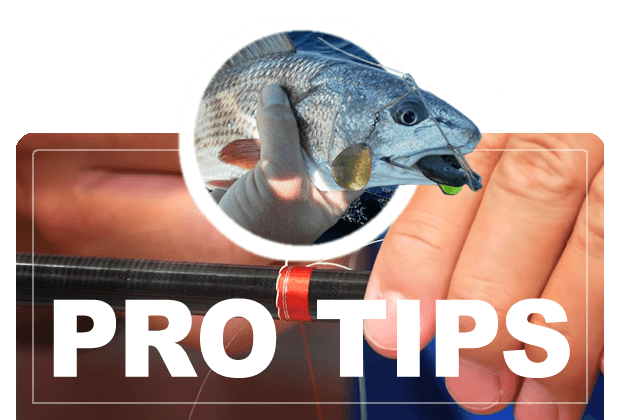How to Build Your Own Custom Fishing Rods (Part 4)
The next thing we need to do is put some guides on the rod. There are many manufactures of guides, some great, some good and some not so good. Since I started building rods in 1984, I have been a strong proponent of Fuji guides. Even their low end guides are good quality and their Sic (silicon carbide) are nothing short of awesome. Each builder has to choose what they prefer and what price point they are willing to spend. Middle of the road for Fuji is their Alconite guide. It is very good and will last a long time with good care.
Okay, now the how to for where guides go on the rod. Each blank has a spline or the strongest side. This can be determined by rotating the blank under pressure. Where the blank “jumps” is the spline. For spinning rods the guides go on the underside of the spline and on baitcasters on the spline itself. There are many formulas that can be used to place guides on the blank, but most manufacturers provide distances for different length blanks. A seven foot rod needs seven guides unless it is quite whippy and then it might require eight. Let us use a seven foot medium action blank and seven guides set at 4 inches, 9, 15, 22, 30, 39, and 49. Mark these distances from the tip with the tip top on the blank but not glued. Now we need to prepare the guide feet. Whether a single foot guide or a double foot guide the end of each foot needs to be grinded down to a thin end so the wrapping thread will easily transfer from the blank to the guide foot. I use a dremel with a silicon grinding bit. Then tape the guide in position; use a thin painters tape. Tape the tag end of your wrap a little in front of your wrap. Start your wrap ¼ to 3/8 inch from the end of the guide foot and wrap up onto the guide foot until you are a ¼ inch from the end. Put a loop of thread with the loop at the end where you are wrapping and finish the wrap. Before cutting the thread (six inches or so longer than necessary) place your thumb securely on the wrap at the end so it will not become loose. Pull the six inches thru the loop and then pull the loop at a ninety degree angle until the line is just under the wrap. Cut the excess off close to the wrap and pull the loop the rest of the way through. Repeat for the rest of your guides. Using the reel seat as your guide, line up all the guides so they are straight. Once they are straight you are ready to glue on the tip top and if you have not done so already the butt cap too.
A final thought on thread wrapping; there is a fine line between wrapping too tight and wrapping too loose. You need to be able to move the guides slightly to line them up, but you do not want them to move if you lightly bump one.
In our final segment we will talk about putting the epoxy finish on the wraps.
Good Fishing!
Capt. Rick Bennett, Ret.
www.rod-man.com
A lifetime fisherman, Capt. Rick Bennett, better known as the Rod-Man,has retired from the day to day activities as a charter boat captain but does offer “ON YOUR BOAT” Guided Fishing Trips. Capt. Rick will show you the when, the where and the how. From rod and reel selection to terminal tackle to bait, Capt. Rick has the know how.
- Choosing the right fishing line
- Better Casting Can Mean More Caught Fish
- Saltwater Fishing late May and into June
- Flounder from an Artificial Perspective
- Local Carolina Beach fishing in the month of April
- How to Build Your Own Custom Fishing Rods (Part 5)
- How to Build Your Own Custom Fishing Rods (Part 3)
- How to Build Your Own Custom Fishing Rods (Part 2)
- How to Build Your Own Custom Fishing Rods (Part 1)
- Surf Fishing Carolina Beach, North Carolina (Part 2)
- Surf Fishing Southeastern North Carolina (Part 1)
- Exciting shark fishing for everyone.
- Fishing for Mahi-Mahi
- “Specialty” Gear for Inshore Fishing
- Fishing for Spanish Mackerel
- Cobia fishing trips and tips, hard fighting, good eating
- Fishing tips on how and where to catch Black Drum
- How to catch Speckled Trout fishing tips and tricks
- How to catch Flounder, flounder fishing tips and tricks
- How to catch redfish, red drum fishing tips and tricks
- Reds and trout and some flounder are biting on artificials
- Atlantic bonito have been caught at the near shore AR’s. Bluefish have been plentiful.
- The wahoo bite is good and some blackfin tuna and sailfish are in the mix.
- Kings are still way out, but the Gulfstream is producing wahoo and blackfin tune.


